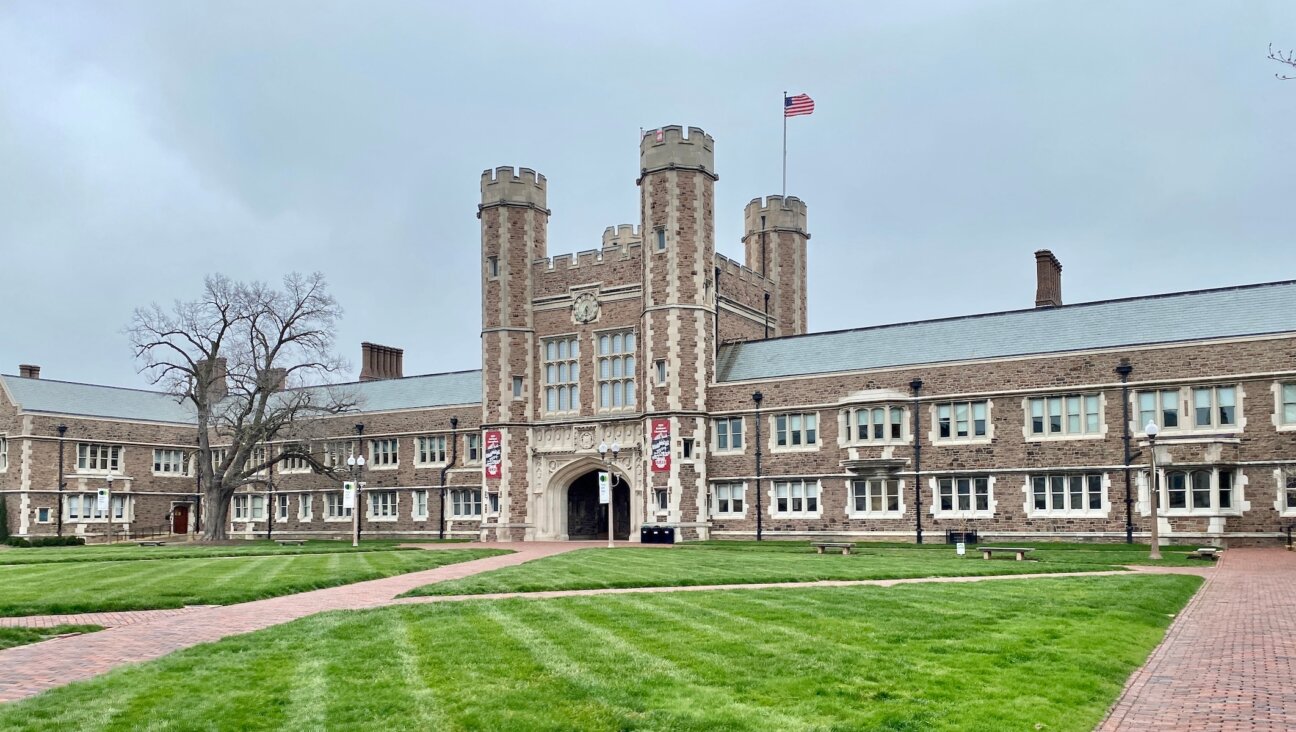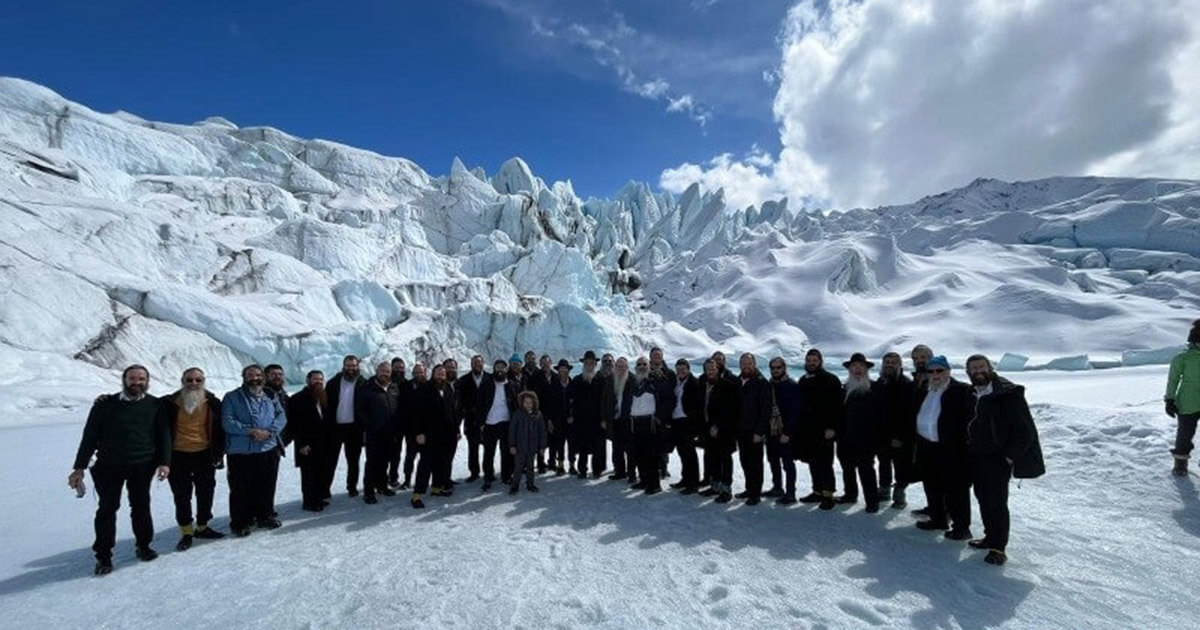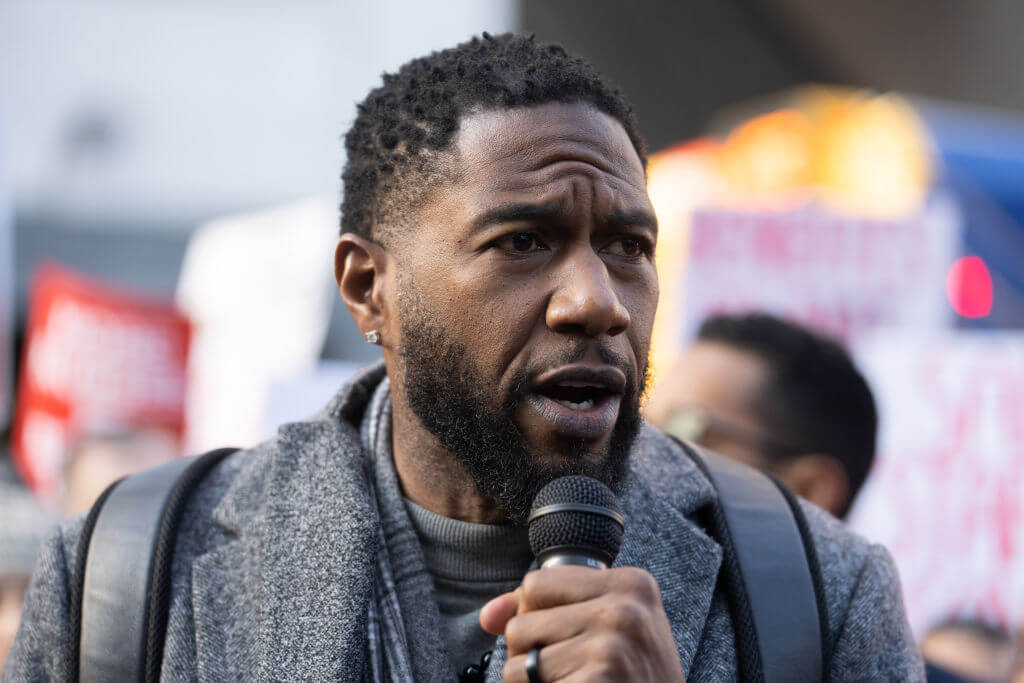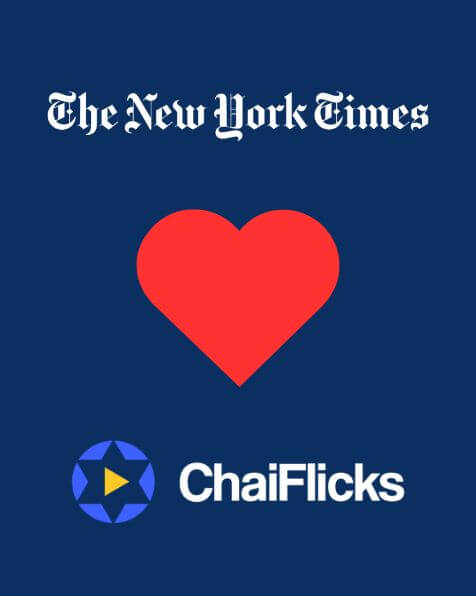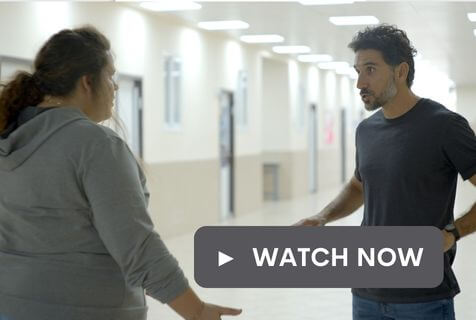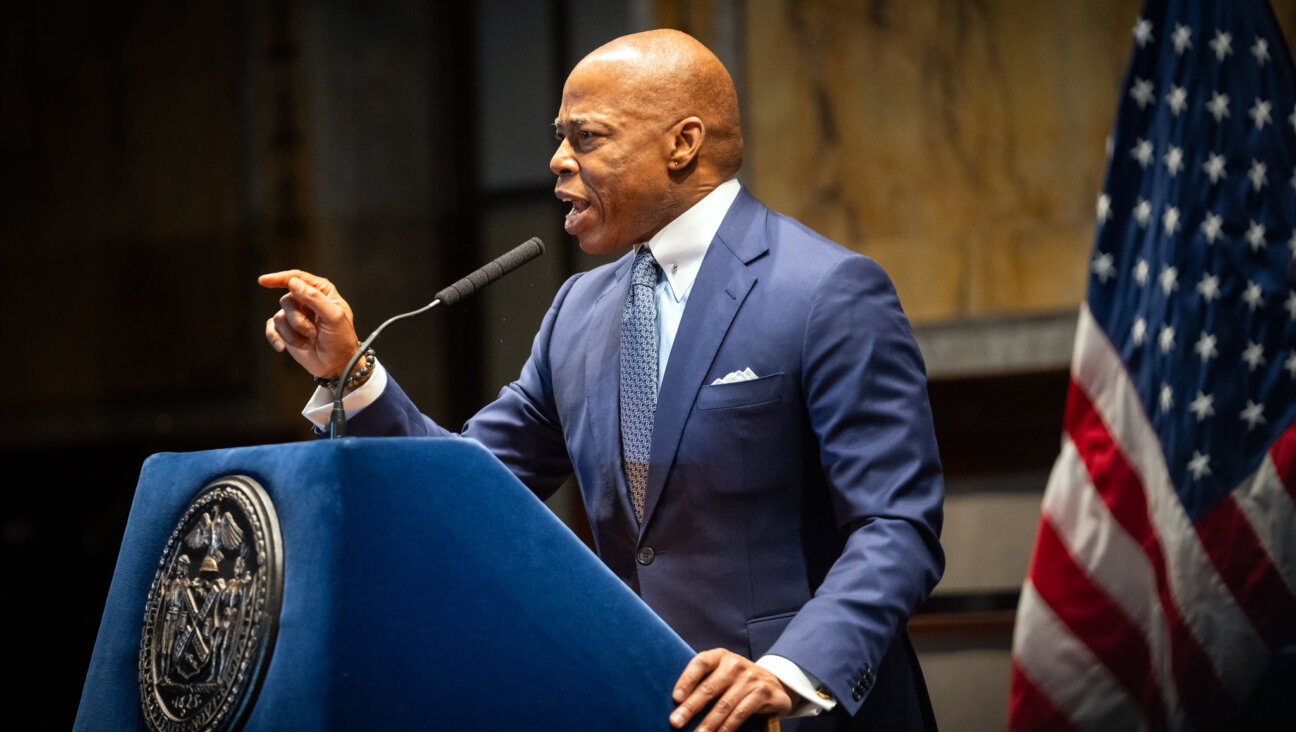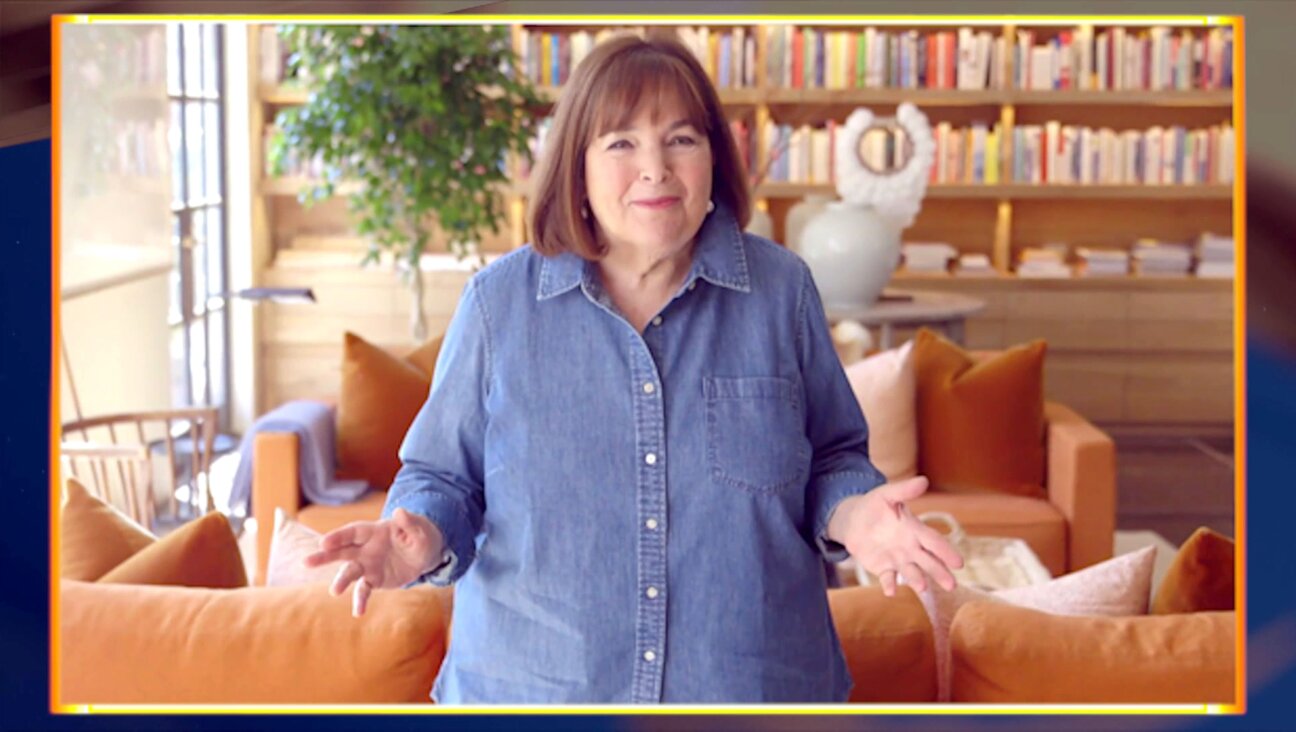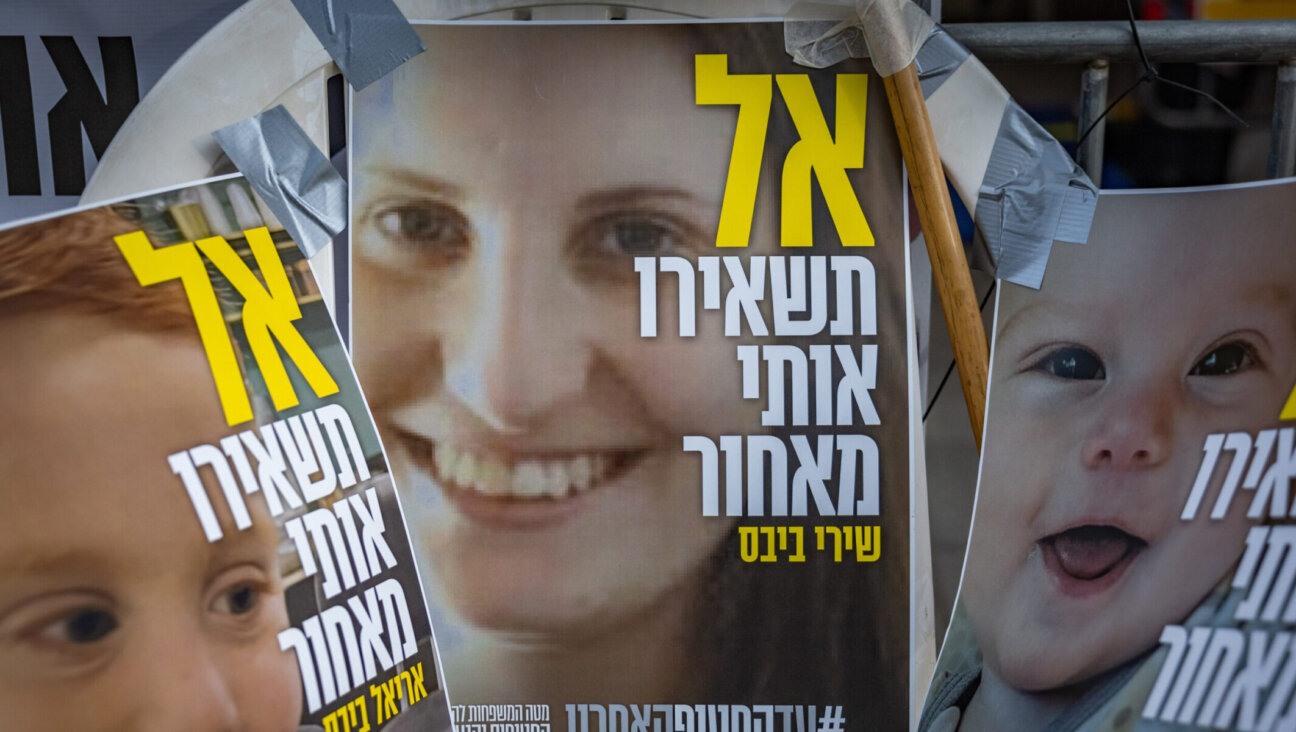For synagogues serving deaf congregants, the shofar service means getting creative

A cantor and congregants at Temple Beth Solomon for the Deaf blow shofars taped with balloons in 2010. Photo by Jan Seeley
On a typical Rosh Hashanah at Temple Beth Solomon of the Deaf in Los Angeles, congregants gather around the bimah and place their hands on the wooden podium to feel the vibrations that accompany blasts of the shofar.
This year, as the ongoing COVID-19 pandemic has meant many synagogues are once more planning remote or socially distanced High Holiday services, the leaders of Beth Solomon and the country’s other deaf-accessible synagogues have had to reimagine the blowing of the shofar yet again.
Luckily, those congregations’ leaders are practiced at finding innovative ways to extend the deeply spiritual experience of the shofar service, often making especially creative use of physical vibrations.
This year, at Beth Solomon, instead of gathering together on the bimah, congregants will be keeping their distance, symbolizing the blowing of the shofar through the use of brightly colored blown-up balloons that vibrate with sound.
American Sign Language has also proved to be a powerful tool in communicating the resonance of the shofar.
“The language of sign is a spiritual language,” said Rabbi Douglas Goldhamer of Congregation Bene Shalom in Skokie, Ill., the only full-service synagogue in the country dedicated to serving deaf congregants. Bene Shalom also hosts a rabbinical school, which offers accessible and egalitarian training to both deaf and hearing students.
At Rosh Hashanah services, Goldhamer, who is hearing and has led the congregation for 50 years, usually uses the vibrations of a timpani or kettle drum, banged in tandem with the shofar’s timber, to help some congregants connect with the shofar’s blasts. The synagogue also has an American Sign Language (ASL) interpreter sign combinations corresponding to the shofar’s different blasts.
“I get goosebumps,” said Nona Balk, former president of Bene Shalom, of the tradition. She joined Congregation Bene Shalom shortly after her daughter’s bat mitzvah, which was held at a non-accessible synagogue.
“The Jewish deaf have always struggled to find a place to worship and have equal accessibility — it’s not easy to find someone who knows Hebrew and can translate to ASL,” Balk said.
Balk is currently president of Bene Shalom’s deaf senior citizens’ club, which is open to deaf seniors regardless of religion, and has participated in the congregation’s signing choir, which uses ASL in lieu of speech to convey music.
At both Bene Shalom and Temple Beth Solomon, religious leaders strive to accommodate congregants with all degrees of hearing loss. That becomes a particular challenge — or opportunity — when it comes to the shofar.
“Different hearing-impaired people have enormous variations of residual hearing,” explained Joseph Slotnick, a former president of Temple Beth Solomon, who lost his hearing to meningitis at age three and first joined the temple in 1973.
That means that under the right circumstances, some congregants can hear shofar blasts. Michael Thal, who was diagnosed with overnight hearing loss at 44 years old and has been a member of Beth Solomon for six years, recalled one celebration during which multiple congregants brought in shofars, which they blew simultaneously to amplify the sound. It worked: he could hear it.
Over the past year, Congregation Bene Shalom, which is hosting High Holiday services virtually, has found ways to extend its accessible approach beyond its immediate community.
“Last year, we had people tuning into our services from California and New York,” said Rabbi Sharri Chan, associate rabbi at Bene Shalom. Goldhamer says the virtual services, which are free of charge, have allowed even more people, hearing and deaf alike, to participate in the congregation’s community.
“We’re showing that all people who want to worship God are welcome,” he said.
A message from our Publisher & CEO Rachel Fishman Feddersen

I hope you appreciated this article. Before you go, I’d like to ask you to please support the Forward’s award-winning, nonprofit journalism so that we can be prepared for whatever news 2025 brings.
At a time when other newsrooms are closing or cutting back, the Forward has removed its paywall and invested additional resources to report on the ground from Israel and around the U.S. on the impact of the war, rising antisemitism and polarized discourse.
Readers like you make it all possible. Support our work by becoming a Forward Member and connect with our journalism and your community.
— Rachel Fishman Feddersen, Publisher and CEO









